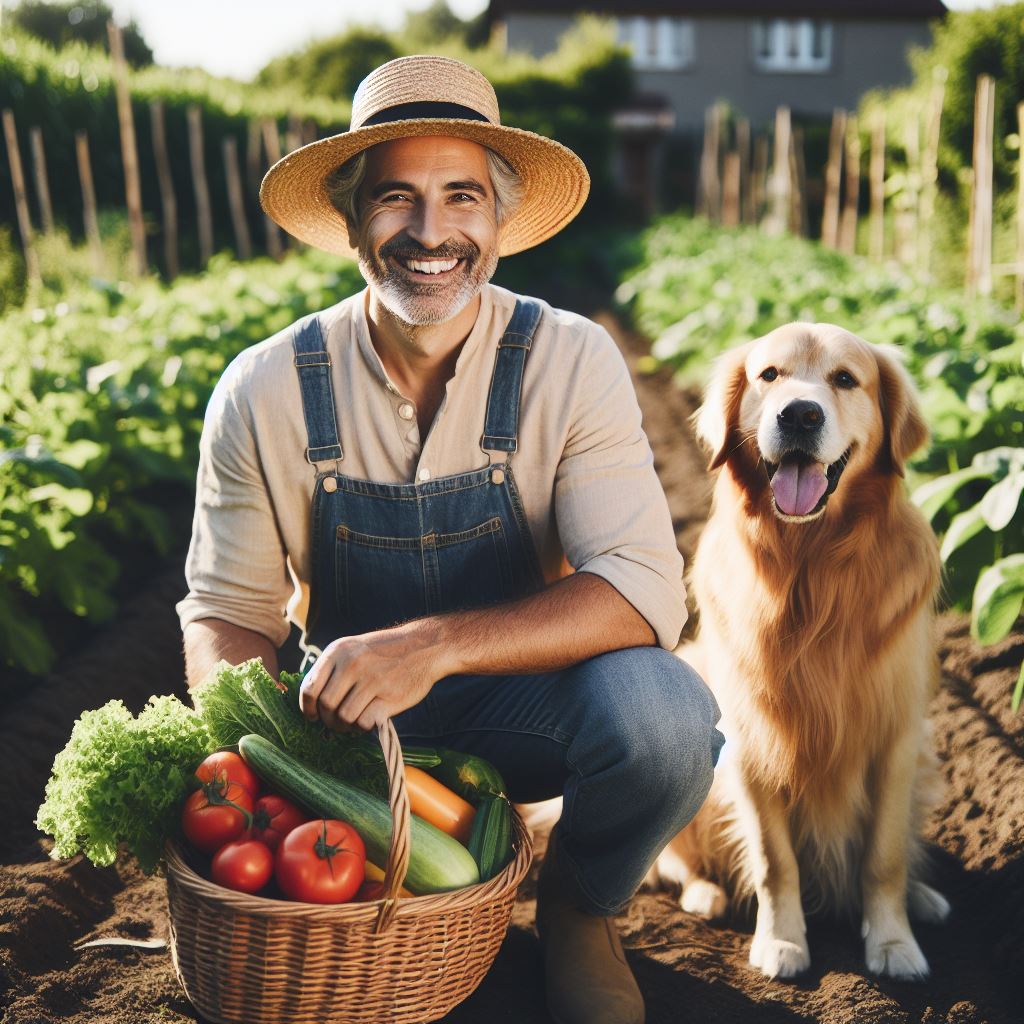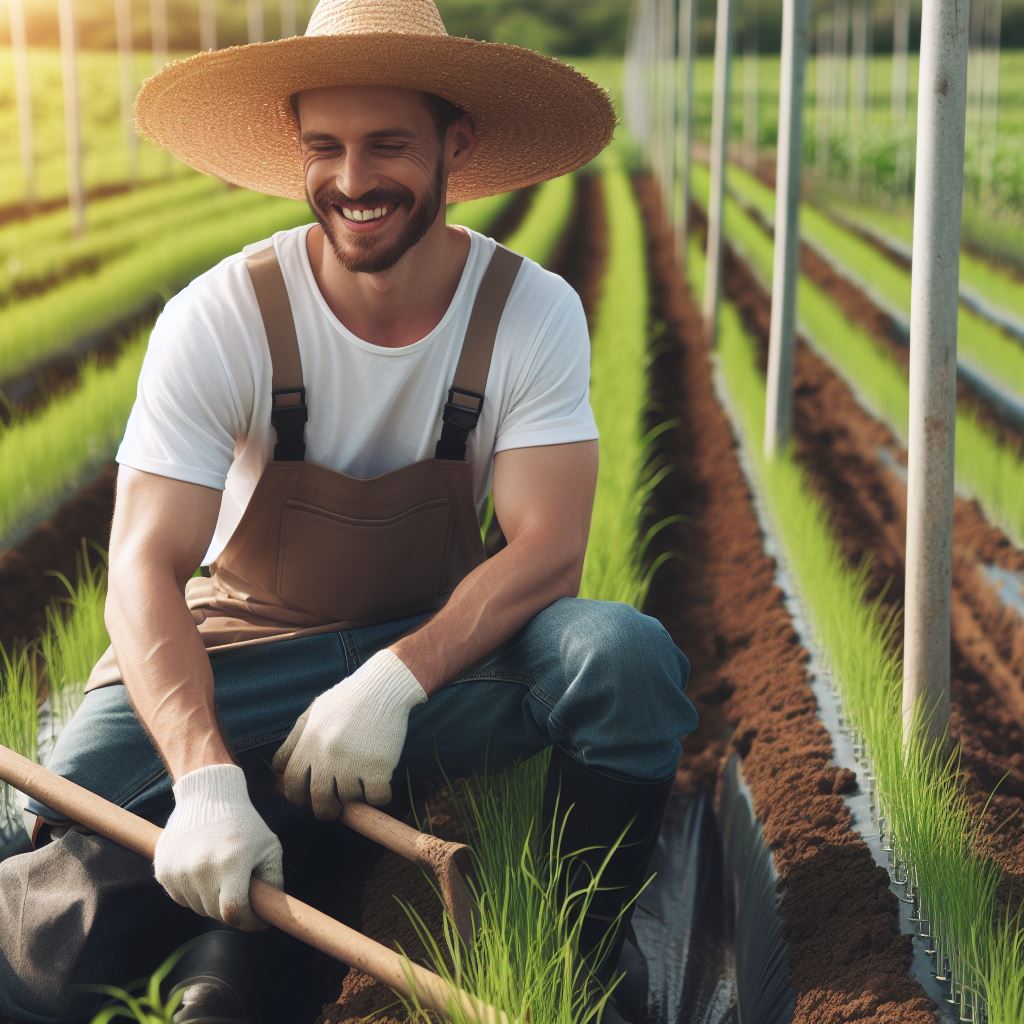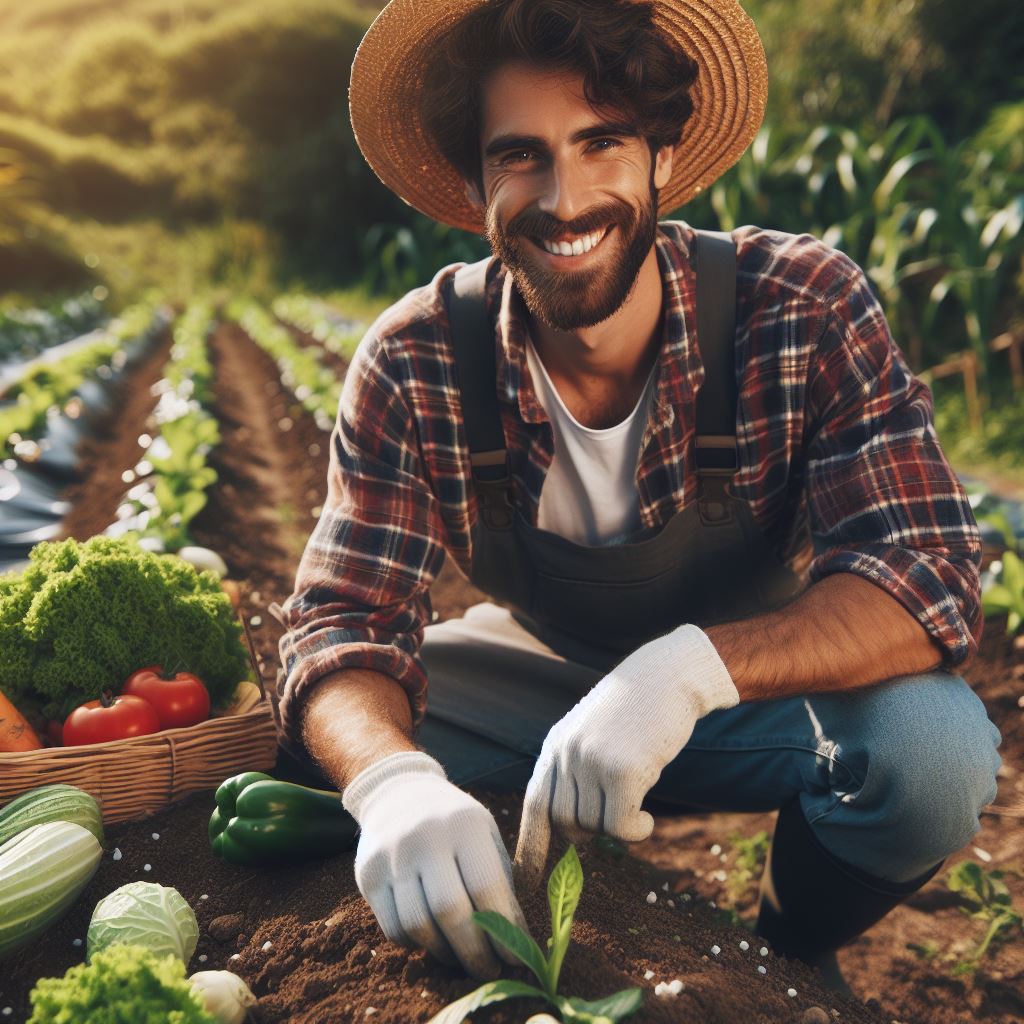Introduction
In the world of gardening, every gardener strives for a bountiful harvest of fresh and delicious vegetables.
However, achieving a successful harvest requires more than just planting the seeds and watering the plants regularly. It requires knowledge and understanding of vegetable harvest hints.
These hints play a crucial role in ensuring the best possible yield from your garden.
Whether you are a beginner or a seasoned gardener, these tips will help you improve your vegetable harvest and make the most out of your gardening efforts.
Knowing the right techniques and strategies for harvesting vegetables can make a significant difference in the quality and quantity of your produce.
Proper harvesting practices not only ensure that you reap the benefits of your hard work, but they also help in prolonging the productivity of your garden.
By following these hints, you can avoid common mistakes and maximize the potential of your vegetable garden.
This blog section will provide you with essential vegetable harvest hints that every gardener should know.
From understanding the optimal time for harvesting different vegetables to learning the right methods of picking and storing them, we will cover all the necessary information.
Additionally, we will discuss the signs to look out for and the techniques to adopt for a successful and abundant harvest.
By the end of this post, you will have a comprehensive understanding of vegetable harvesting and be ready to enjoy the fruits of your labor.
So, stay tuned, as we delve into these valuable vegetable harvest hints and help you become a master gardener!
Early Signs of Vegetables Ready for Harvest
When it comes to vegetable gardening, knowing when to harvest your crops is essential for their optimal taste and nutritional value.
Here, we will discuss the early signs to look for in different vegetables and the importance of monitoring for the perfect harvest time.
Visual Cues to Look for in Different Vegetables
- Tomatoes: Look for a deep red color and a slightly soft feel when gently pressed.
- Carrots: Observe the fully developed size and tapering shape with a bright orange color.
- Peppers: Wait until they reach their mature color, which could be green, red, yellow, or any other variety-specific hue.
- Beans: Harvest when the pods are plump and crisp, but before the seeds inside become too large.
- Cucumbers: Opt for harvest when they have a dark green color and a slightly glossy skin.
- Lettuce: Harvest the outer leaves once they are large enough to provide a decent-sized salad.
Importance of Monitoring for Optimal Harvest Time
- Harvesting too early may result in underdeveloped flavors and textures, leading to disappointment.
- Delayed harvest can cause vegetables to become overripe, losing their taste and becoming unpleasantly mushy.
- Regular monitoring enables you to pick each vegetable at its peak, ensuring the best flavor and nutritional value.
- Harvesting at the right time also promotes the continual production of certain vegetables, like beans or zucchinis.
In fact, being able to determine the right time to harvest your vegetables is crucial for a successful garden.
Transform Your Agribusiness
Unlock your farm's potential with expert advice tailored to your needs. Get actionable steps that drive real results.
Get StartedBy keeping an eye out for the early signs of readiness and understanding the visual cues specific to each vegetable, you can ensure the best flavor, texture, and nutritional value.
Regular monitoring allows you to enjoy your homegrown vegetables at their peak, making all the effort in the garden worthwhile. Happy harvesting!
Read: Organic Pest Control Explained
Harvesting Techniques for Different Vegetables
Harvesting your homegrown vegetables at the right time is essential to ensure maximum flavor and nutrition.
Each vegetable has its specific harvesting technique that gardeners should follow.
Proper Tools and Equipment
Using the right tools and equipment can make harvesting easier and more efficient. Here are some essential tools for vegetable harvest:
- Pruning Shears or Scissors: Use for cutting lettuce, spinach, kale, chard, and other leafy greens.
- Garden Fork or Trowel: Essential for digging out root vegetables like carrots, radishes, beets, and potatoes.
- Harvesting Knife: Ideal for tomatoes, cucumbers, and other vine vegetables. Ensures clean cuts without damaging the plants.
- Harvesting Basket or Bucket: Use for collecting harvested vegetables, preventing bruising and damage during transport.
Techniques for Gentle Handling of Vegetables
To maintain the quality and freshness of your harvest, it’s important to handle the vegetables with care. Follow these techniques to ensure gentle handling:
- Handle vegetables by their stems or leaves to avoid damaging the edible parts.
- Avoid dropping or throwing vegetables into the basket or bucket as this can cause bruising and damage.
- Clean dirt and debris off the vegetables using a soft brush or cloth but avoid washing them until ready to use.
- Store harvested vegetables properly in a cool place to maintain their freshness and nutritional value.
Tips for harvesting specific vegetables
Here are some useful tips for harvesting different types of vegetables:
Leafy Greens
- Lettuce: Harvest loose-leaf lettuce by cutting outer leaves about an inch above the base.
- Spinach: Pick spinach leaves individually when they reach a desired size, starting from the outer leaves.
- Kale: Harvest kale leaves by cutting them from the outer part of the plant, leaving the center intact for continuous growth.
- Swiss Chard: Cut chard leaves from the outer part of the plant, allowing new growth to continue.
Root Vegetables
- Carrots: Gently loosen the soil around the carrot and pull it out. Harvest when they reach the desired size.
- Radishes: Pull radishes out of the ground when they are about the size of a golf ball. Firmly grasp the leaves and gently pull.
- Beets: Harvest beets when they have reached the desired size, usually around 1-2 inches in diameter. Carefully dig them out of the soil.
- Potatoes: Dig potatoes carefully with a fork or shovel, avoiding any damage to the tubers.
Vine Vegetables
- Tomatoes: Harvest tomatoes when they are firm and fully colored. Twist or cut the stem just above the fruit.
- Cucumbers: Pick cucumbers when they have reached the desired size and are still firm. Cut the stem with a sharp knife or shears.
- Beans: Harvest beans when they are long and crisp but still tender. Gently snap them off the plant.
- Peas: Harvest peas when the pods are plump and bright green. Use both hands to twist off the pods from the vine.
By following these harvesting techniques and using the appropriate tools and equipment, you can ensure a bountiful and flavorful vegetable harvest from your garden.
Enjoy the satisfaction of growing your own produce and savor the delicious flavors that come straight from your backyard.
Read: Eco-Friendly Pest Control in Modern Farming
Storing and Preserving Harvested Vegetables
When it comes to harvesting vegetables from your garden, proper storage and preservation techniques are crucial.
Best practices for post-harvest handling
Here are some best practices for post-harvest handling and recommendations for vegetable storage methods to help prolong their freshness and quality.
- Clean the vegetables: Clean vegetables before storing to prevent bacteria and fungi growth, preserving their freshness and quality.
- Sort and remove damaged vegetables: Inspect and separate damaged or diseased vegetables. Remove decayed leaves or stems for a healthier harvest.
- Use the right storage containers: Select storage containers based on veggies: Ventilated plastic bags for greens, mesh bags or baskets for potatoes and onions.
Recommendations for vegetable storage methods
- Refrigeration: Refrigerate veggies for freshness: Store leafy greens, carrots, celery, and broccoli in perforated plastic bags in the crisper.
- Canning: Preserve veggies with canning. Follow proper techniques, use a pressure canner for low-acid vegetables like beans, corn, and peas.
- Freezing: Freezing, a popular veggie preservation method: Blanch in boiling water, cool in ice, pack in freezer-safe containers.
Tips for prolonging the freshness and quality of harvested vegetables
- Label and date containers: Mark vegetable type and harvest date for freshness tracking. Prioritize using older vegetables first.
- Maintain ideal conditions: Store veggies in a cool, dark, and humid spot. Options include a root cellar, basement, or refrigerator drawer.
- Avoid ethylene-producing fruits: Keep vegetables away from apples, bananas, and tomatoes to prevent accelerated ripening.
- Don’t wash before storing: Clean veggies just before use to prevent moisture-induced rotting.
- Rotate stock: Practice first-in, first-out rotation to use vegetables before spoilage. Place newer harvests behind older ones.
- Check for spoilage: Regularly inspect stored vegetables and remove any showing signs of spoilage to prevent decay spread.
- Preserve excess produce: Can, pickle, or make sauces and soups with surplus vegetables for off-season enjoyment.
- Share with others: If you have too many vegetables, share with friends, family, or local food banks to reduce wastage.
By following these tips, you can maximize the storage life of your harvested vegetables and enjoy their freshness and nutritional value for longer periods. Happy gardening!
Read: Resilient Crops: Adapting to New Climates

Uncover the Details: Understanding Soil Moisture for Crop Health
Uncover the Details: Organic Crop Selection Basics
Common Harvesting Mistakes to Avoid
Identifying and Addressing Common Mistakes in Vegetable Harvesting
- Lack of Attention to Detail: Carefully observe vegetables for signs of under or over-maturity.
- Inconsistent Harvesting: Maintain a regular harvest routine to prevent missed opportunities and overgrowth.
- Failure to Rotate Crops: Rotate crops to prevent disease buildup, enhance soil fertility, and optimize vegetable quality.
- Neglecting Harvesting Techniques: Learn proper techniques like gentle twisting or cutting to avoid damage during harvesting.
- Not Utilizing Common Sense: Exercise common sense, avoiding harvesting when vegetables are wet or covered in dew.
- Disregarding Storage Requirements: Adhere to specific storage conditions for each vegetable to prevent spoilage or loss of flavor.
- Overlooking Pests and Diseases: Regularly inspect plants for pests or diseases that can hinder growth and affect harvest quality.
- Overcrowding Plants: Provide ample space for each plant to prevent overcrowding and ensure productive harvests.
- Rushing the Process: Take time to remove weeds, address pests, and ensure plant health before harvesting.
- Not Documenting Successes and Failures: Maintain a garden journal to record successful and unsuccessful harvesting methods for future reference.
Strategies for Preventing Damage and Ensuring Successful Harvests
- Regularly inspect vegetables: Check plants daily for ripe ones and promptly remove any damaged or diseased vegetables.
- Harvest early in the day: Pick vegetables in the morning to avoid wilting and dehydration in cooler temperatures.
- Use proper handling techniques: Handle vegetables gently to prevent bruising or damage from dropping or throwing.
- Maintain clean harvesting equipment: Regularly clean and disinfect tools to prevent diseases from spreading among plants.
- Harvest during optimal weather: Choose dry, non-windy days to minimize damage and moisture introduction during harvest.
- Store vegetables correctly: Follow specific guidelines for each vegetable’s storage requirements regarding temperature, humidity, and ethylene exposure.
- Learn from experienced gardeners: Seek insights and tips from seasoned gardeners or online gardening forums for successful harvesting techniques.
- Adjust harvesting times: Customize harvest times based on each vegetable’s growth pattern for optimal results.
- Properly manage pest and disease control: Monitor and address pest and disease issues promptly to protect your harvest from damage.
- Celebrate successes and learn from failures: Acknowledge achievements and use mistakes as learning opportunities to continually improve harvesting techniques.
By avoiding common mistakes, addressing them when they arise, and implementing strategies for successful harvests, gardeners can enjoy bountiful and nutritious vegetable yields.
Gain More Insights: Crop Rotation: Enhancing Soil Fertility
Extending the Harvest Season
Are you a gardener who wants to enjoy fresh vegetables for a longer period? By implementing certain techniques and strategies, you can extend your harvest season and maximize yield.
This section will provide you with valuable tips and tricks to achieve this goal.
Techniques for Extending the Growing Season
- Start with the right varieties: Choose vegetable varieties that have shorter maturity dates or are specifically bred for extended harvest seasons.
- Utilize raised beds: Raised beds warm up faster in spring, allowing you to plant earlier and prolong the growing season.
- Provide proper soil preparation: Ensure your soil is fertile and well-drained to facilitate healthy and continuous growth.
- Use row covers and cold frames: These protective covers can shield your plants from cold temperatures, allowing you to start planting earlier in spring and harvest later in fall.
- Install hoop houses or high tunnels: These structures provide a controlled environment that extends the growing season by several weeks or even months.
Tips for Succession Planting and Utilizing Protective Covers
- Succession planting: Instead of planting all your vegetables at once, stagger your plantings every few weeks. This ensures a continuous supply rather than a one-time harvest.
- Choose quick-maturing varieties: Opt for vegetables that mature rapidly, allowing you to replant as soon as possible, extending your harvest season.
- Monitor and control pests: Regularly inspect your plants for pests and diseases. Take immediate action to prevent an infestation that could limit your harvest.
- Water carefully: Provide your plants with consistent moisture, especially during dry periods, to promote healthy growth and maximize the harvest.
- Mulch and weed: Mulching helps retain soil moisture and suppresses weeds, which can compete with your vegetables for nutrients and reduce harvest yield.
Maximizing the Yield by Prolonging the Vegetable Harvest
- Harvest at the right time: Pick your vegetables at peak ripeness to enjoy their best flavor and encourage further production.
- Remove mature plants promptly: Once a plant is past its prime, remove it to create space for new plantings and maintain an organized garden bed.
- Utilize vertical space: Grow vining vegetables on trellises or cages to save space and increase overall yield.
- Use fertilizers and organic amendments: Feed your plants with appropriate nutrients to ensure continuous growth and productive harvests.
- Preserve excess produce: Consider canning, freezing, or drying surplus vegetables to enjoy them during the off-season, further extending the harvest benefits.
By implementing these techniques, practicing succession planting, and utilizing protective covers, you can successfully extend your vegetable harvest season.
Enjoy a bountiful harvest and savor the taste of fresh homegrown produce for an extended period!
Read: Organic Pest Control: Effective and Safe
Showcase Your Farming Business
Publish your professional farming services profile on our blog for a one-time fee of $200 and reach a dedicated audience of farmers and agribusiness owners.
Publish Your ProfileDiscover More: Balancing IPM and Crop Health
Conclusion
Important vegetable harvest hints for gardeners to have a successful gardening experience has been discussed.
We learned that timing is crucial when harvesting vegetables, as picking them at the right stage ensures optimal flavor and nutritional value.
We also discussed the importance of proper handling and storage techniques to maintain the freshness and quality of harvested vegetables.
Additionally, we emphasized the significance of regular monitoring and maintenance of the garden to promote healthy plant growth and prevent diseases and pests.
We encourage all gardeners to implement these vegetable harvest hints in their gardening routines. By doing so, they can enjoy a bountiful harvest and relish the rewards of their hard work.
Remember, with patience and dedication, anyone can become a successful gardener and experience the joy of growing their own fresh and delicious vegetables.
Happy harvesting!




